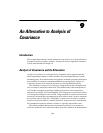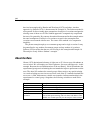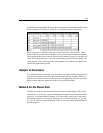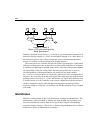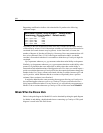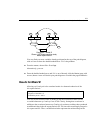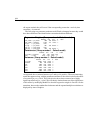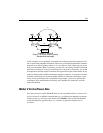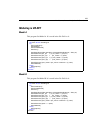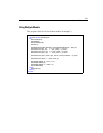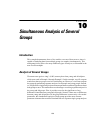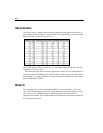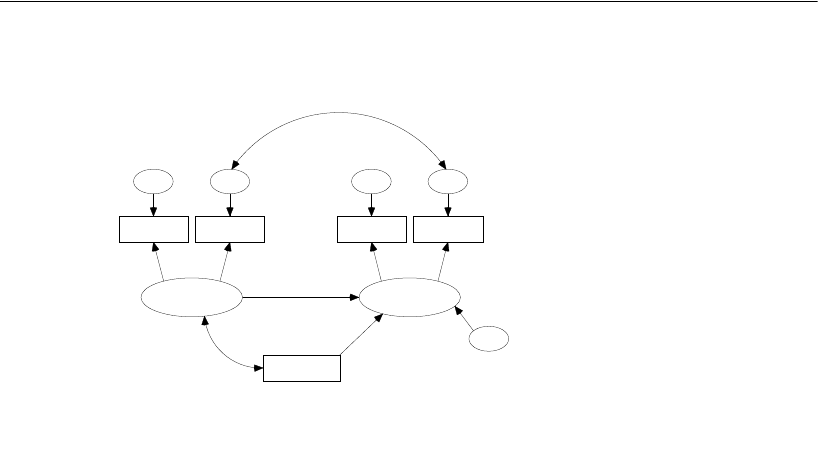
153
An Alternative to Analysis of Covariance
In this example, we are primarily concerned with testing a particular hypothesis and
not so much with parameter estimation. However, even when the parameter estimates
themselves are not of primary interest, it is a good idea to look at them anyway to see
if they are reasonable. Here, for instance, you may not care exactly what the correlation
between eps2 and eps4 is, but you would expect it to be positive. Similarly, you would
be surprised to find any negative estimates for regression weights in this model. In any
model, you know that variables cannot have negative variances, so a negative variance
estimate would always be an unreasonable estimate. If estimates cannot pass a gross
sanity check, particularly with a reasonably large sample, you have to question the
correctness of the model under which they were obtained, no matter how well the
model fits the data.
Model C for the Olsson Data
Now that we have a model (Model B) that we can reasonably believe is correct, let’s
see how it fares if we add the constraint that post_verbal does not depend on treatment.
In other words, we will test a new model (call it Model C) that is just like Model B
except that Model C specifies that post_verbal has a regression weight of 0 on
treatment.
pre_verbal
.86
pre_syn
eps1
.93
.71
pre_opp
eps2
.84
.88
post_verbal
.86
post_syn
eps3
.70
post_opp
eps4
.93 .84
treatment
.86
.
2
8
zeta
Example 9: Model B
Olsson (1973) test coaching study
Standardized estimates
.15
.51



